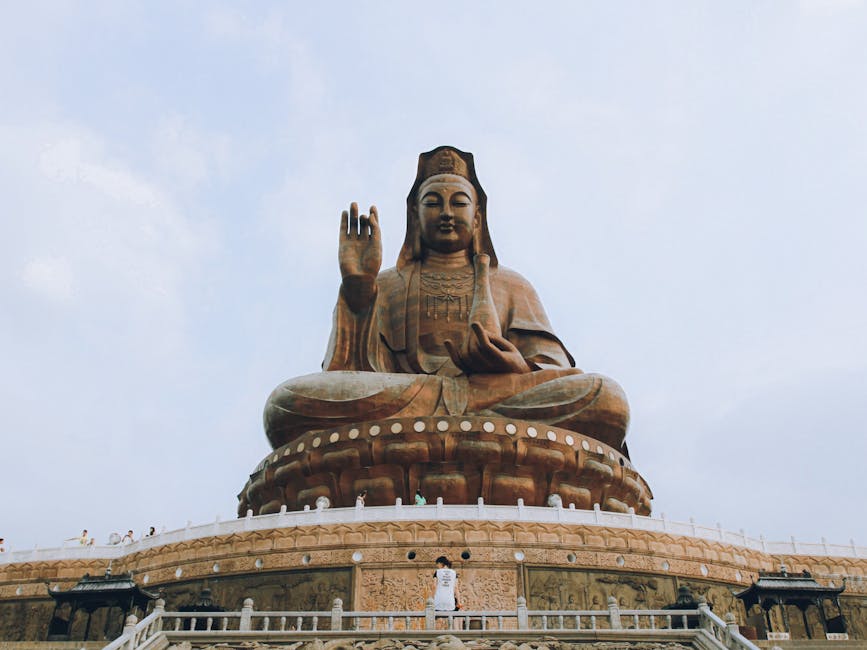The Role of a Bodhisattva in Mahayana Buddhism
Mahayana Buddhism, one of the major branches of Buddhism, emphasizes the path of the Bodhisattva. A Bodhisattva is an enlightened being who chooses to remain in the cycle of samsara (birth, death, and rebirth) to help all sentient beings achieve enlightenment. This selfless path is central to Mahayana practice and philosophy. In this blog post, we will explore the role of a Bodhisattva, their qualities, their vows, and how they inspire modern practitioners.
What is a Bodhisattva?
In Mahayana Buddhism, a Bodhisattva is an individual who has attained a high level of enlightenment but delays entering Nirvana in order to help others achieve the same state. The term “Bodhisattva” combines “Bodhi” (enlightenment) and “Sattva” (being), symbolizing a being committed to the path of enlightenment for the benefit of all.
Key Characteristics of a Bodhisattva
A Bodhisattva is characterized by several key qualities:
- Compassion: A Bodhisattva embodies limitless compassion for all sentient beings.
- Wisdom: They possess deep understanding and insight into the nature of reality.
- Patience: They demonstrate immense patience, even in challenging circumstances.
- Diligence: They are tireless in their efforts to help others.
- Determination: They are unwavering in their pursuit of enlightenment for all beings.
The Bodhisattva Vows
The Bodhisattva vows are central to the practice of Mahayana Buddhism. These vows signify a commitment to the path of the Bodhisattva and are often recited as a part of daily practice. The primary vows include:
The Four Great Vows
- Sentient beings are numberless; I vow to save them all.
- Delusions are inexhaustible; I vow to end them all.
- Dharma gates are boundless; I vow to enter them all.
- The Buddha way is unsurpassable; I vow to become it.
These vows encapsulate the essence of a Bodhisattva’s mission: to aid all beings in overcoming suffering and attaining enlightenment.
Famous Bodhisattvas in Mahayana Buddhism
Mahayana Buddhism reveres several Bodhisattvas who serve as role models for practitioners. Some of the most well-known include:
Avalokiteshvara (Guanyin)
Avalokiteshvara, also known as Guanyin in East Asia, is the Bodhisattva of Compassion. Depicted with multiple arms and eyes, Avalokiteshvara symbolizes the ability to perceive and respond to the suffering of all beings. This Bodhisattva is often invoked for protection and guidance.
Manjushri
Manjushri is the Bodhisattva of Wisdom. He is often depicted holding a flaming sword, which represents the cutting through of ignorance, and a sutra scroll, symbolizing the teachings of the Buddha. Manjushri inspires practitioners to cultivate wisdom and insight.
Ksitigarbha (Jizo)
Ksitigarbha, known as Jizo in Japan, is the Bodhisattva of the Earth and protector of beings in hell realms. He is depicted holding a staff and a wish-fulfilling jewel. Ksitigarbha’s vow is to remain in the cycle of rebirth until all hell realms are empty.
The Modern Relevance of the Bodhisattva Path
In contemporary times, the Bodhisattva path continues to inspire and guide practitioners. Here are some ways the Bodhisattva ideal can be applied in modern life:
Engaged Buddhism
Engaged Buddhism, a term coined by Thich Nhat Hanh, involves applying Buddhist principles to social, political, and environmental issues. Practitioners of Engaged Buddhism strive to alleviate suffering and promote peace and justice in the world, embodying the Bodhisattva’s compassion and commitment to helping others.
Personal Practice
On a personal level, individuals can adopt the Bodhisattva’s qualities in their daily lives. This includes practicing kindness, compassion, and patience in interactions with others, and working to overcome personal delusions and obstacles.
Community Involvement
Many Buddhist communities offer opportunities for service and volunteer work, allowing practitioners to engage in compassionate action. This can include activities such as teaching, providing support to those in need, or participating in environmental conservation efforts.
Conclusion
The role of a Bodhisattva in Mahayana Buddhism is both profound and inspiring. By embodying qualities such as compassion, wisdom, and determination, Bodhisattvas serve as guiding lights for practitioners on the path to enlightenment. Their vows and actions remind us of the importance of selflessness and service to others. In modern times, the Bodhisattva ideal continues to be relevant, offering a powerful framework for personal growth and social engagement. By aspiring to the Bodhisattva path, we can contribute to a more compassionate and enlightened world.

